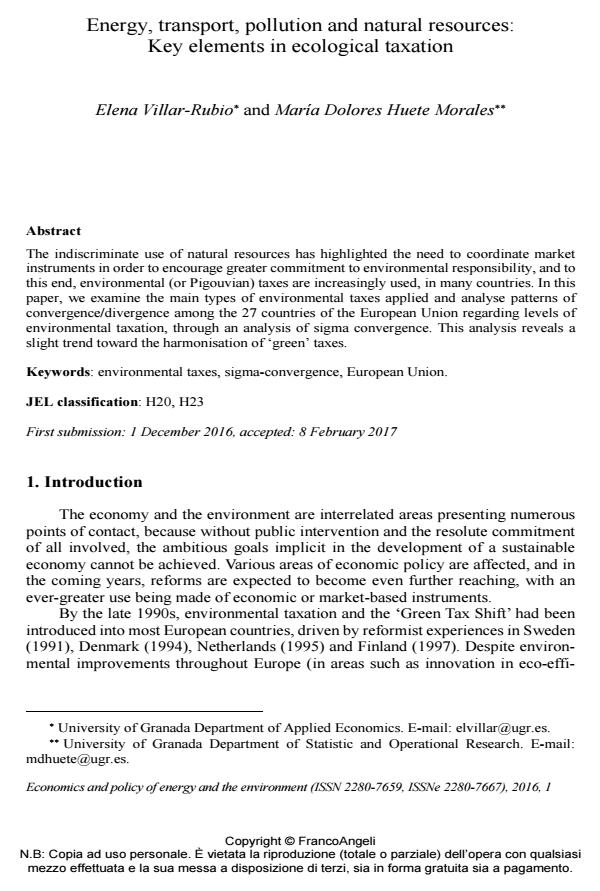Energy, transport, pollution and natural resources: Key elements in ecological taxation
Titolo Rivista ECONOMICS AND POLICY OF ENERGY AND THE ENVIRONMENT
Autori/Curatori Elena Villar-Rubio, María Dolores Huete Morales
Anno di pubblicazione 2017 Fascicolo 2016/1
Lingua Inglese Numero pagine 12 P. 111-122 Dimensione file 851 KB
DOI 10.3280/EFE2016-001006
Il DOI è il codice a barre della proprietà intellettuale: per saperne di più
clicca qui
Qui sotto puoi vedere in anteprima la prima pagina di questo articolo.
Se questo articolo ti interessa, lo puoi acquistare (e scaricare in formato pdf) seguendo le facili indicazioni per acquistare il download credit. Acquista Download Credits per scaricare questo Articolo in formato PDF

FrancoAngeli è membro della Publishers International Linking Association, Inc (PILA)associazione indipendente e non profit per facilitare (attraverso i servizi tecnologici implementati da CrossRef.org) l’accesso degli studiosi ai contenuti digitali nelle pubblicazioni professionali e scientifiche
The indiscriminate use of natural resources has highlighted the need to coordinate market instruments in order to encourage greater commitment to environmental responsibility, and to this end, environmental (or Pigouvian) taxes are increasingly used, in many countries. In this paper, we examine the main types of environmental taxes applied and analyse patterns of convergence/divergence among the 27 countries of the European Union regarding levels of environmental taxation, through an analysis of sigma convergence. This analysis reveals a slight trend toward the harmonisation of ‘green’ taxes.
Parole chiave:Environmental taxes, sigma-convergence, European Union.
Elena Villar-Rubio, María Dolores Huete Morales, Energy, transport, pollution and natural resources: Key elements in ecological taxation in "ECONOMICS AND POLICY OF ENERGY AND THE ENVIRONMENT" 1/2016, pp 111-122, DOI: 10.3280/EFE2016-001006